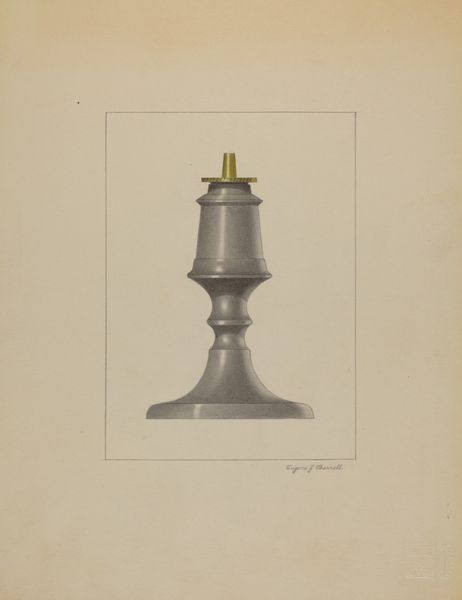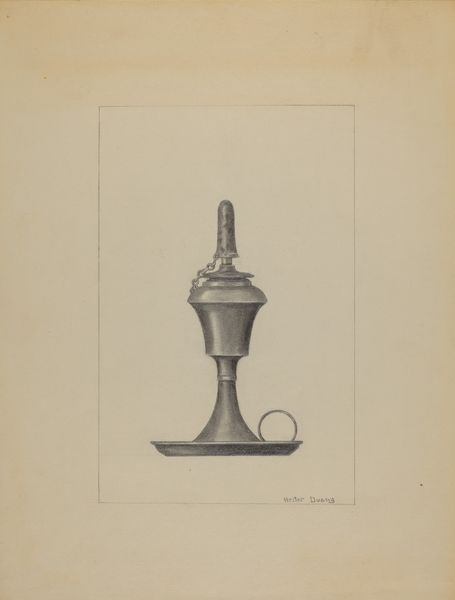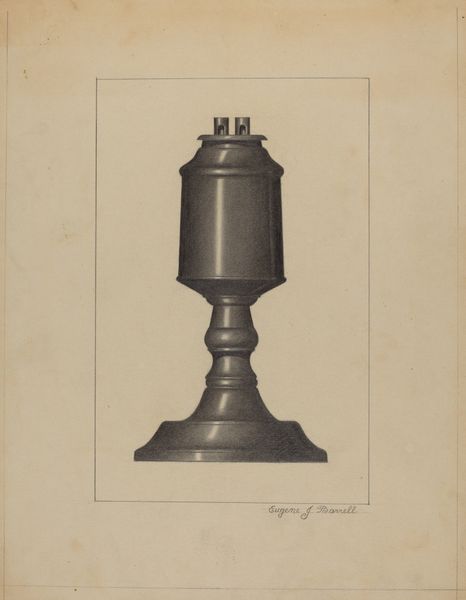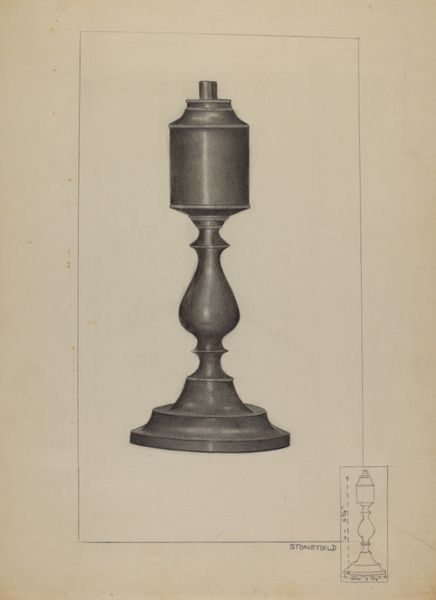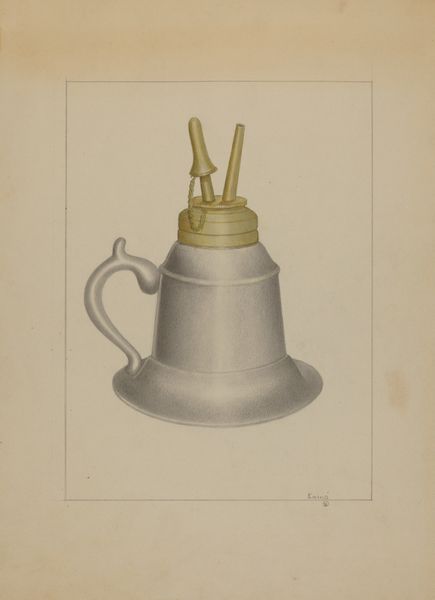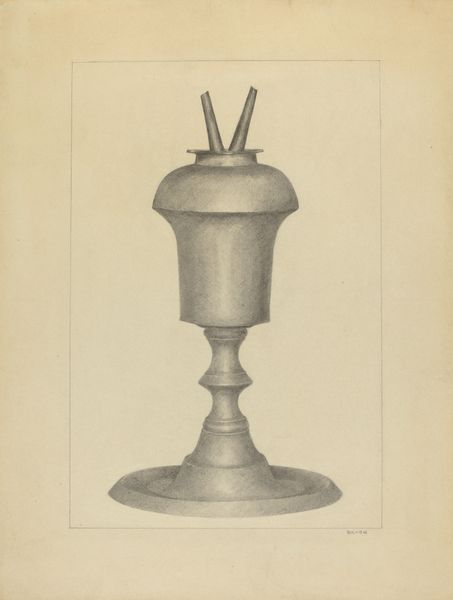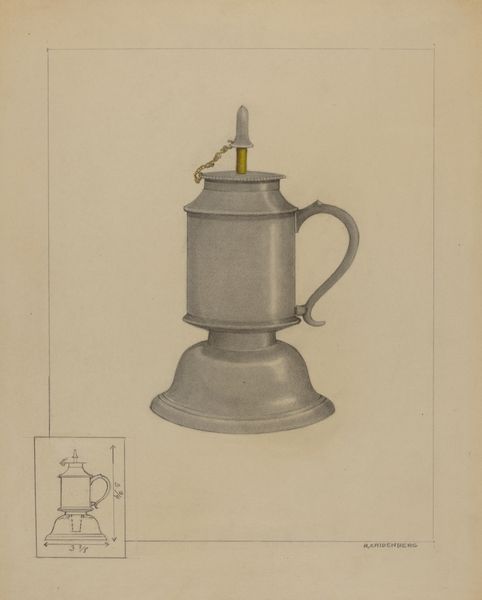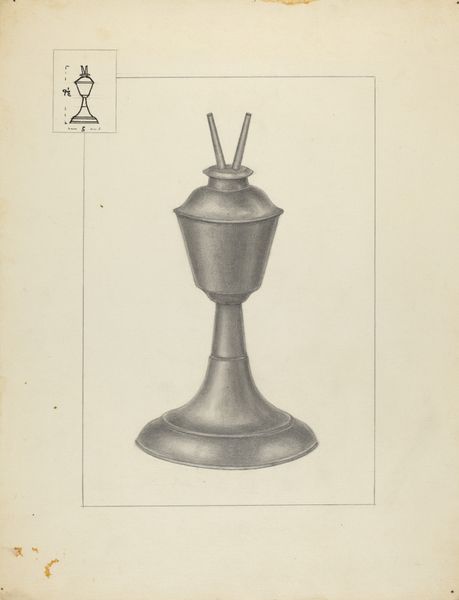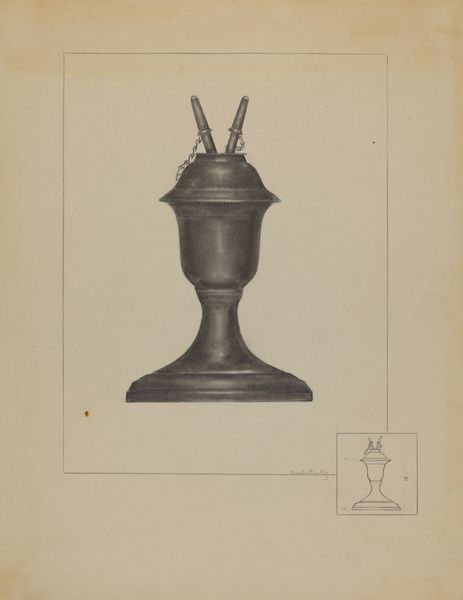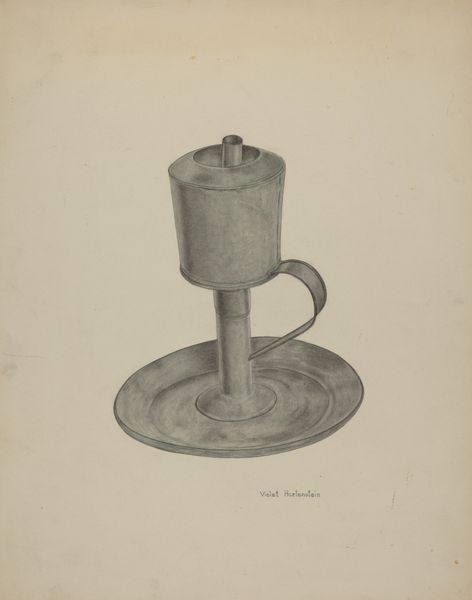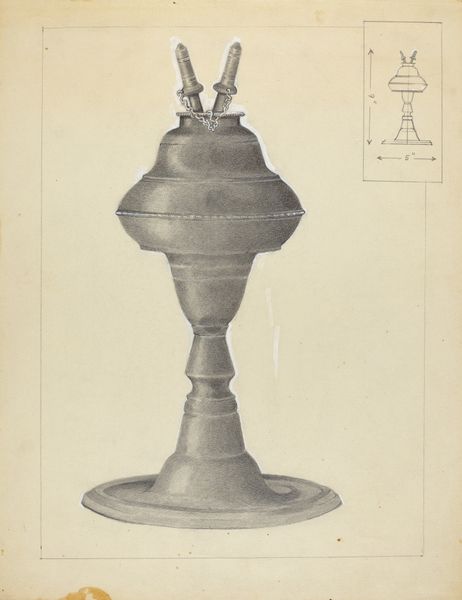
drawing, pencil
#
drawing
#
pencil
Dimensions: overall: 29.6 x 23 cm (11 5/8 x 9 1/16 in.)
Copyright: National Gallery of Art: CC0 1.0
Editor: Here we have Hester Duany’s pencil drawing, "Lamp," created around 1937. It's quite a detailed depiction; you can really see the artist was trying to capture the texture of the metal. What strikes you when you look at it? Curator: Well, seeing such meticulous detail rendered in pencil immediately makes me think about the labor involved. Before considering its aesthetic value, I think about the time and effort invested in representing this mass-produced object. Editor: Mass-produced? So it's not about the artistry of a handcrafted lamp? Curator: Precisely. It’s a representation of something likely made in a factory. Consider the cultural context; the 1930s, a time of industrial growth alongside economic hardship. The artist isn't just drawing a lamp; she's engaging with the materiality of everyday life and its transformation by industry. Think about how the consumption of electricity was also changing daily life at this time, and how the production and availability of new electric devices impacted the household. Editor: That's a totally different way to look at it. I was focusing on its formal qualities, the light and shadow. Curator: Those formal qualities reinforce the mechanical nature of the lamp itself. Look how precisely she renders the joins and curves, almost as if diagramming a machine. This piece bridges art and industrial design. What statement do you think Duany is making here? Editor: Maybe it's about elevating the ordinary, forcing us to consider the beauty even in the mundane products of industrial society. I hadn’t considered how much context informs the piece, especially regarding consumption and the means of production in that era. Curator: Indeed. We started with just a "lamp", now consider the labor that allowed it to exist, from design to consumption!
Comments
No comments
Be the first to comment and join the conversation on the ultimate creative platform.
